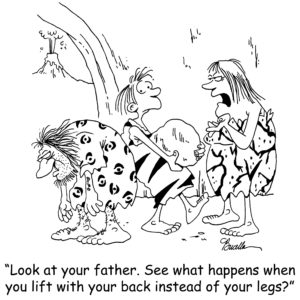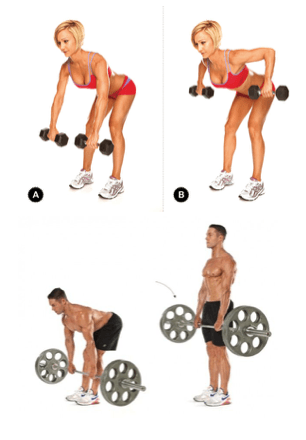We know that exercise is one of the most effective lifestyle strategies to help make bones and muscles as strong as possible as well as optimise balance to reduce the risk of fractures. However …. not all exercise is good exercise.
There are several routine gym, yoga and Pilates exercises that are considered unsafe for those with osteoporosis and osteopaenia, particularly if you have already suffered a spinal compression fracture. (This can be seen on a spine X-ray).
Fractures in the spinal vertebrae are less likely to be due to a fall, and are more likely related to repetitively loading the spine in a flexed position. It is possible to cause ‘micro trauma’ fractures in the vertebrae without experiencing significant back pain. Understanding the importance of good posture and correct lifting techniques to help prevent spinal compression fractures whilst exercising (and also in everyday life) is a vital component of injury prevention.
Stop Doing These Exercises Now
Avoiding exercises which load the spine in a flexed position is important if you have spine osteopaenia or osteoporosis. (healthybonesaustralia.org.au). Some examples of common exercises to avoid are ‘crunch’ sit ups, ‘sit and reach’, roll ups from lying and rollovers.

In everyday life, lifting with your spine in a forward bent position (e.g. groceries, grandchildren, or pulling obstinate weeds in the garden), can also place significant pressure on your vertebrae. So when reaching forwards to pick up any weight, bend at the hips and knees keeping the back straight, after you have first assessed that you are strong enough to lift the weight without over-straining.

Start Doing These Exercises Now
(after checking with your health professional or vivabodystrength.com.au)
Spinal extension exercises on the other hand can safely build spinal bone and muscle strength and have been shown to reduce the likelihood of spinal fractures (Australian guidelines on exercise for osteoporosis 2017).

Exercises to build bone and muscle strength, balance and flexibility have been proven to help people with osteoporosis avoid injury. Impact weight-bearing exercises and resistance training are particularly useful for people with low bone density and can be simply integrated into your daily routine. We all easily incorporate a few minutes a day habitually brushing our teeth to maintain good dental health, so the goal is to develop that same attitude to habitually exercising to maintain good bone health!

ENJOY SOME REAL BALANCE
Having good balance to prevent falls and fractures requires practice. Balance is a complex skill that is affected by ageing, pain, disease and surgery so can decline without you noticing…. until you fall, trip or slip. It is definitely a case of “use it or lose it”! Deterioration in muscle strength, joint mobility, speedy nerve conduction, and your ability to multi-task all impact on your balance ability.
Challenging functional balance exercises in standing can significantly reduce a person’s chance of falling (World guidelines for falls prevention 2022). A review of balance studies found that good falls prevention programs reduced both the rate of falls and number of people falling in older people living in the community.
NEXT STEPS
If you have general health issues or musculoskeletal problems, your osteoporosis-safe exercise program will need to be tailored to your abilities and needs. Contact Viva BodyStrength for personalised advice or talk to your physiotherapist about the right exercises for your particular condition.

Leave a Reply
Want to join the discussion?Feel free to contribute!